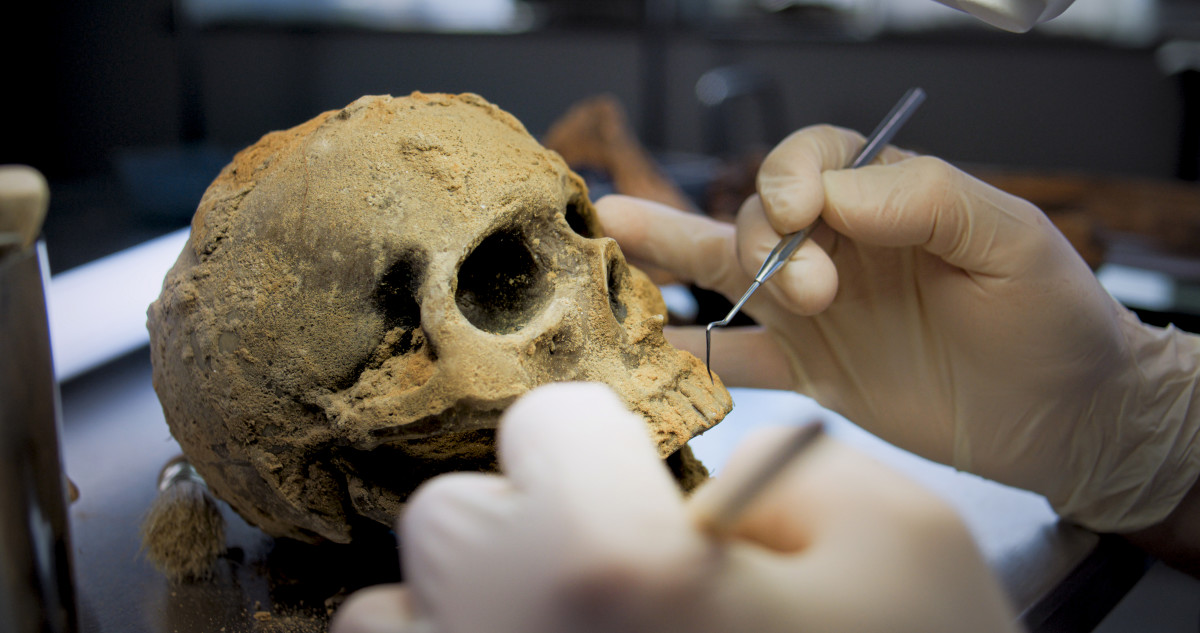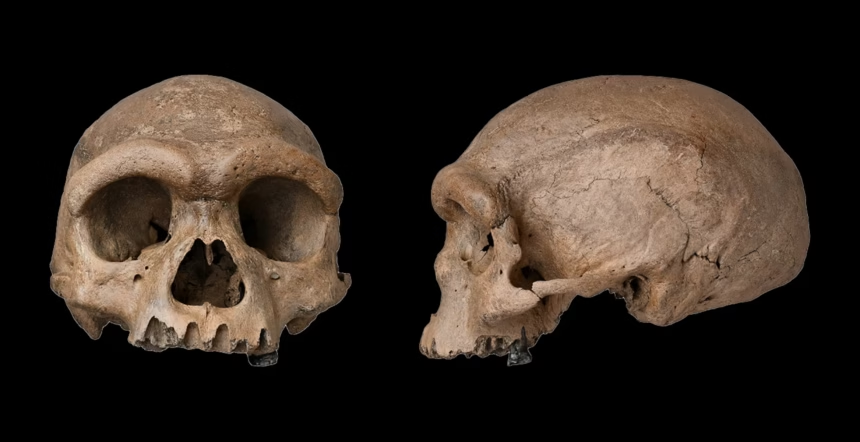Introduction
The discovery of the Denisovan Dragon Man skull in Harbin, China has opened a new chapter in the story of human evolution. With its exceptional preservation and unique features, this fossil offers the first near-complete Denisovan skull, giving scientists unprecedented insight into this mysterious ancient human lineage that once roamed Asia.
Hidden for Decades: The Dragon Man’s Story
The skull was initially discovered in 1933 by a laborer during bridge construction under Japanese occupation in Harbin, northeastern China. Fearing confiscation, the laborer hid the skull in an abandoned well where it remained for decades. Only in 2018 did his descendants hand it over to scientists at Hebei GEO University, providing researchers with a unique chance to analyze a remarkably intact specimen.

Unraveling Origins Through Proteins and DNA
Unlike previous fossil finds with limited genetic material, the Dragon Man’s exceptional preservation allowed for advanced molecular analysis. Researchers extracted proteins from the petrous part of the skull and DNA from dental calculus (plaque) adhering to its teeth. Both molecular signatures were compared with existing Denisovan samples from Siberia, Tibet, and Taiwan.
The match was striking. Protein markers aligned closely with known Denisovan variants, while the mitochondrial DNA showed near-identical sequences to those found in Denisovan remains from the Tibetan Plateau and Denisova Cave in Siberia. These results, published in leading journals like Science and Cell in 2025, confirmed the Dragon Man’s place within the Denisovan lineage.
The First Denisovan Face Revealed

Until now, Denisovans were known only from fragmented remains—a finger bone, a few teeth, and genetic traces. The Dragon Man changes this dramatically by offering the first complete cranial features associated with Denisovans. Its morphology includes:
- A massive brow ridge, more prominent than seen in modern humans
- A large cranial capacity, estimated at around 1,420 cc, similar to both Neanderthals and Homo sapiens
- Wide eye sockets and delicate cheekbones
- A flat face without a pronounced chin
These physical traits suggest robust adaptations to cold climates, indicating Denisovan expansion across diverse Asian environments during the Middle Pleistocene.
Expanding the Denisovan Map
Previously, Denisovans were primarily associated with Siberia’s Denisova Cave. However, the Dragon Man, alongside other discoveries in Tibet and Taiwan, shows that Denisovans occupied a much wider range across Asia. Their ability to survive in both high-altitude plateaus and lowland regions reveals a highly adaptable population.
In fact, genetic studies on present-day Asian and Oceanian populations have shown traces of Denisovan DNA, suggesting interbreeding events between Denisovans and modern humans as Homo sapiens migrated through Asia.
Scientific Debate: Homo Longi or Denisovan?
While most researchers agree on the Denisovan connection, some argue that Dragon Man represents a distinct species—Homo longi. Proponents of this classification highlight subtle differences in facial morphology compared to other Denisovan fossils. However, the overwhelming molecular evidence currently supports its classification as part of the broader Denisovan group.

Implications for Human Evolution
The Harbin skull reshapes our understanding of human diversity during the Middle Pleistocene. It confirms that several human lineages—including Neanderthals, Denisovans, and early modern humans—coexisted and sometimes interbred across Eurasia. The Dragon Man bridges gaps in the fossil record and provides valuable data on how ancient humans adapted to diverse climates and geographic regions.
Conclusion
The discovery of the Denisovan Dragon Man skull is one of the most significant paleoanthropological breakthroughs of recent decades. By combining advanced protein and DNA analysis with exceptional fossil preservation, scientists have finally given Denisovans a face and placed them firmly within our complex evolutionary history.
As technology improves and more fossils are analyzed, our understanding of ancient human diversity will continue to evolve. The Dragon Man skull not only reveals the past but inspires future exploration into our shared ancestry.
Explore more recent science discoveries
Stay tuned to The Morning News Informer for ongoing updates on paleontology, evolution, and groundbreaking scientific discoveries worldwide.









